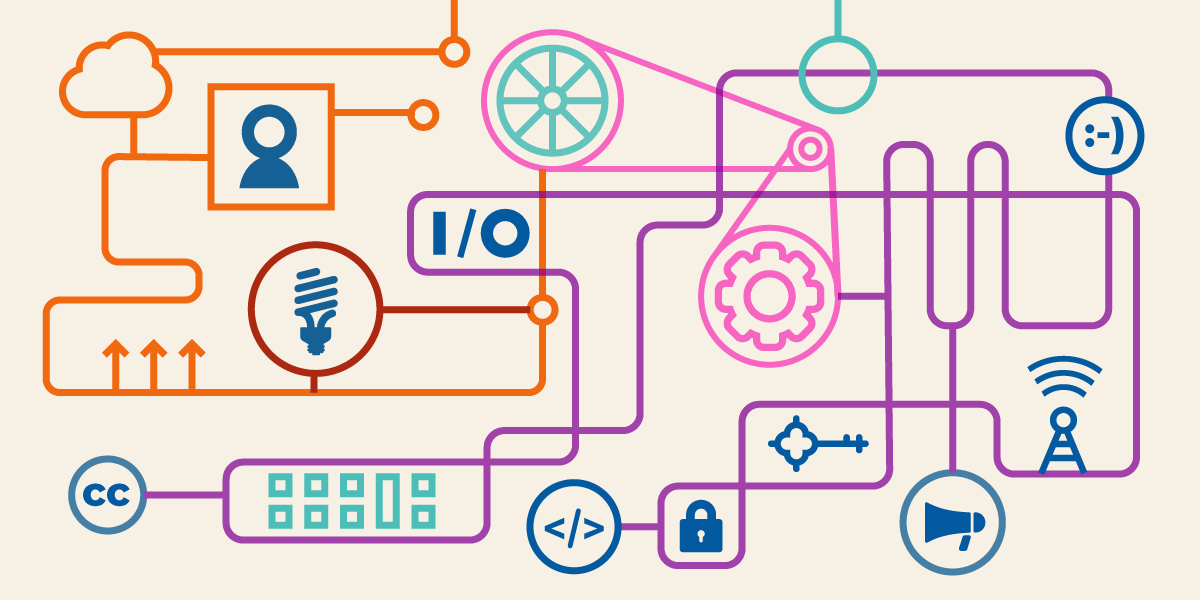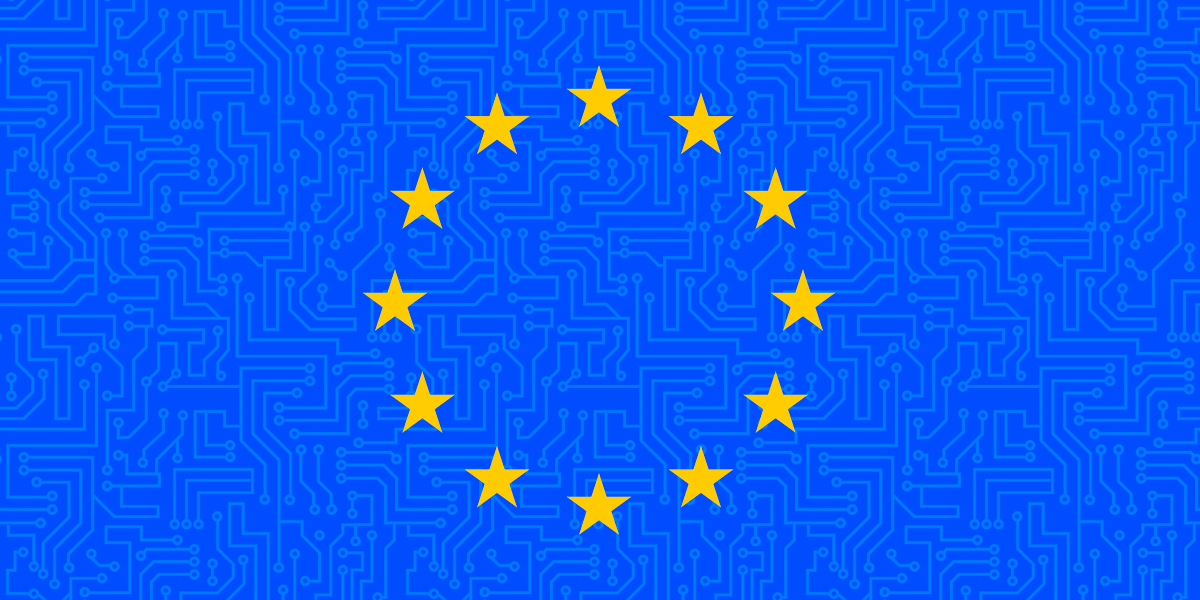Creators of This Police Location Tracking Tool Aren't Vetting Buyers. Here's How To Protect Yourself
404 Media, along with Haaretz, Notus, and Krebs On Security recently reported on a company that captures smartphone location data from a variety of sources and collates that data into an easy-to-use tool to track devices’ (and, by proxy, individuals’) locations. The dangers that this tool presents are especially grave for those traveling to or from out-of-state reproductive health clinics, places of worship, and the border.
The tool, called Locate X, is run by a company called Babel Street. Locate X is designed for law enforcement, but an investigator working with Atlas Privacy, a data removal service, was able to gain access to Locate X by simply asserting that they planned to work with law enforcement in the future.
With an incoming administration adversarial to those most at risk from location tracking using tools like Locate X, the time is ripe to bolster our digital defenses. Now more than ever, attorneys general in states hostile to reproductive choice will be emboldened to use every tool at their disposal to incriminate those exerting their bodily autonomy. Locate X is a powerful tool they can use to do this. So here are some timely tips to help protect your location privacy.
First, a short disclaimer: these tips provide some level of protection to mobile device-based tracking. This is not an exhaustive list of techniques, devices, or technologies that can help restore one’s location privacy. Your security plan should reflect how specifically targeted you are for surveillance. Additional steps, such as researching and mitigating the on-board devices included with your car, or sweeping for physical GPS trackers, may be prudent steps which are outside the scope of this post. Likewise, more advanced techniques such as flashing your device with a custom-built privacy- or security-focused operating system may provide additional protections which are not covered here. The intent is to give some basic tips for protecting yourself from mobile device location tracking services.
Disable Mobile Advertising Identifiers
Services like Locate X are built atop an online advertising ecosystem that incentivizes collecting troves of information from your device and delivering it to platforms to micro-target you with ads based on your online behavior. One linchpin in the way distinct information (in this case, location) delivered to an app or website at a certain point in time is connected to information delivered to a different app or website at the next point in time is through unique identifiers such as the mobile advertising identifiers (MAIDs). Essentially, MAIDs allow advertising platforms and the data brokers they sell to to “connect the dots” between an otherwise disconnected scatterplot of points on a map, resulting in a cohesive picture of the movement of a device through space and time.
As a result of significant pushback by privacy advocates, both Android and iOS provided ways to disable advertising identifiers from being delivered to third-parties. As we described in a recent post, you can do this on Android following these steps:
With the release of Android 12, Google began allowing users to delete their ad ID permanently. On devices that have this feature enabled, you can open the Settings app and navigate to Security & Privacy > Privacy > Ads. Tap “Delete advertising ID,” then tap it again on the next page to confirm. This will prevent any app on your phone from accessing it in the future.
The Android opt out should be available to most users on Android 12, but may not be available on older versions. If you don’t see an option to “delete” your ad ID, you can use the older version of Android’s privacy controls to reset it and ask apps not to track you.
And on iOS:
Apple requires apps to ask permission before they can access your IDFA. When you install a new app, it may ask you for permission to track you.
Select “Ask App Not to Track” to deny it IDFA access.
To see which apps you have previously granted access to, go to Settings > Privacy & Security > Tracking.
In this menu, you can disable tracking for individual apps that have previously received permission. Only apps that have permission to track you will be able to access your IDFA.
You can set the “Allow apps to Request to Track” switch to the “off” position (the slider is to the left and the background is gray). This will prevent apps from asking to track in the future. If you have granted apps permission to track you in the past, this will prompt you to ask those apps to stop tracking as well. You also have the option to grant or revoke tracking access on a per-app basis.
Apple has its own targeted advertising system, separate from the third-party tracking it enables with IDFA. To disable it, navigate to Settings > Privacy > Apple Advertising and set the “Personalized Ads” switch to the “off” position to disable Apple’s ad targeting.
Audit Your Apps’ Trackers and Permissions
In general, the more apps you have, the more intractable your digital footprint becomes. A separate app you’ve downloaded for flashlight functionality may also come pre-packaged with trackers delivering your sensitive details to third-parties. That’s why it’s advisable to limit the amount of apps you download and instead use your pre-existing apps or operating system to, say, find the bathroom light switch at night. It isn't just good for your privacy: any new app you download also increases your “attack surface,” or the possible paths hackers might have to compromise your device.
We get it though. Some apps you just can’t live without. For these, you can at least audit what trackers the app communicates with and what permissions it asks for. Both Android and iOS have a page in their Settings apps where you can review permissions you've granted apps. Not all of these are only “on” or “off.” Some, like photos, location, and contacts, offer more nuanced permissions. It’s worth going through each of these to make sure you still want that app to have that permission. If not, revoke or dial back the permission. To get to these pages:
On Android: Open Settings > Privacy & Security > Privacy Controls > Permission Manager.
On iPhone: Open Settings > Privacy & Security.
If you're inclined to do so, there are tricks for further research. For example, you can look up tracks in Android apps using an excellent service called Exodus Privacy. As of iOS 15, you can check on the device itself by turning on the system-level app privacy report in Settings > Privacy > App Privacy Report. From that point on, browsing to that menu will allow you to see exactly what permissions an app uses, how often it uses them, and what domains it communicates with. You can investigate any given domain by just pasting it into a search engine and seeing what’s been reported on it. Pro tip: to exclude results from that domain itself and only include what other domains say about it, many search engines like Google allow you to use the syntax
-site:www.example.com
.
Disable Real-Time Tracking with Airplane Mode
To prevent an app from having network connectivity and sending out your location in real-time, you can put your phone into airplane mode. Although it won’t prevent an app from storing your location and delivering it to a tracker sometime later, most apps (even those filled with trackers) won’t bother with this extra complication. It is important to keep in mind that this will also prevent you from reaching out to friends and using most apps and services that you depend on. Because of these trade-offs, you likely will not want to keep Airplane Mode enabled all the time, but it may be useful when you are traveling to a particularly sensitive location.
Some apps are designed to allow you to navigate even in airplane mode. Tapping your profile picture in Google Maps will drop down a menu with Offline maps. Tapping this will allow you to draw a boundary box and pre-download an entire region, which you can do even without connectivity. As of iOS 18, you can do this on Apple Maps too: tap your profile picture, then “Offline Maps,” and “Download New Map.”
Other apps, such as Organic Maps, allow you to download large maps in advance. Since GPS itself determines your location passively (no transmissions need be sent, only received), connectivity is not needed for your device to determine its location and keep it updated on a map stored locally.
Keep in mind that you don’t need to be in airplane mode the entire time you’re navigating to a sensitive site. One strategy is to navigate to some place near your sensitive endpoint, then switch airplane mode on, and use offline maps for the last leg of the journey.
Separate Devices for Separate Purposes
Finally, you may want to bring a separate, clean device with you when you’re traveling to a sensitive location. We know this isn’t an option available to everyone. Not everyone can afford purchasing a separate device just for those times they may have heightened privacy concerns. If possible, though, this can provide some level of protection.
A separate device doesn’t necessarily mean a separate data plan: navigating offline as described in the previous step may bring you to a place you know Wi-Fi is available. It also means any persistent identifiers (such as the MAID described above) are different for this device, along with different device characteristics which won’t be tied to your normal personal smartphone. Going through this phone and keeping its apps, permissions, and browsing to an absolute minimum will avoid an instance where that random sketchy game you have on your normal device to kill time sends your location to its servers every 10 seconds.
One good (though more onerous) practice that would remove any persistent identifiers like long-lasting cookies or MAIDs is resetting your purpose-specific smartphone to factory settings after each visit to a sensitive location. Just remember to re-download your offline maps and increase your privacy settings afterwards.
Further Reading
Our own Surveillance Self-Defense site, as well as many other resources, are available to provide more guidance in protecting your digital privacy. Often, general privacy tips are applicable in protecting your location data from being divulged, as well.
The underlying situation that makes invasive tools like Locate X possible is the online advertising industry, which incentivises a massive siphoning of user data to micro-target audiences. Earlier this year, the FTC showed some appetite to pursue enforcement action against companies brokering the mobile location data of users. We applauded this enforcement, and hope it will continue into the next administration. But regulatory authorities only have the statutory mandate and ability to punish the worst examples of abuse of consumer data. A piecemeal solution is limited in its ability to protect citizens from the vast array of data brokers and advertising services profiting off of surveilling us all.
Only a federal privacy law with a strong private right of action which allows ordinary people to sue companies that broker their sensitive data, and which does not preempt states from enacting even stronger privacy protections for their own citizens, will have enough teeth to start to rein in the data broker industry. In the meantime, consumers are left to their own devices (pun not intended) in order to protect their most sensitive data, such as location. It’s up to us to protect ourselves, so let’s make it happen!








